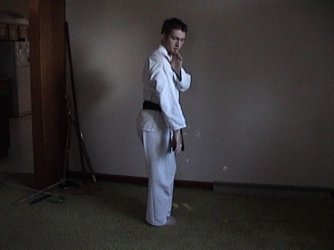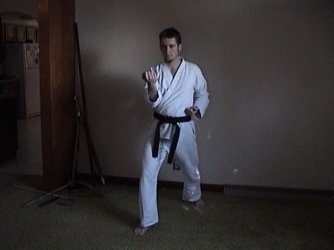JT_the_Ninja
Black Belt
robertmrivers: a linear front stance may be okay for your style, but that wouldn't fly for me, for two reasons:
1) the balance issue; both feet in a line gives you an unstable stance. In TSD, at least as it's taught to me, the front stance is for when you're going straight forward. If both your feet are in a line, it's incredibly easy to be swept off your feet, or to be knocked backwards. Keep your feet just shoulder width apart, both feet facing the same direction, and your back foot locks you in place, at least to the extent that it's harder to sweep you or push you backward. You still have both feet pointed straight at your opponent, and this leads to
2) TSD kicks high, and a lot. No better or faster way to bring up a front snap kick than when your foot is already set and doesn't have to come around your body.
Again, I respect your karate style, but I'm just explaining why there's never 100% congruence between styles.
Oh, and I'm still interested to see your videos.
upnorthkyosa: not sure I completely understand your videos. mind explaining with a little more detail? You say those relate to the main topic at hand (no pun intended), so I'm interested to see what you mean.
1) the balance issue; both feet in a line gives you an unstable stance. In TSD, at least as it's taught to me, the front stance is for when you're going straight forward. If both your feet are in a line, it's incredibly easy to be swept off your feet, or to be knocked backwards. Keep your feet just shoulder width apart, both feet facing the same direction, and your back foot locks you in place, at least to the extent that it's harder to sweep you or push you backward. You still have both feet pointed straight at your opponent, and this leads to
2) TSD kicks high, and a lot. No better or faster way to bring up a front snap kick than when your foot is already set and doesn't have to come around your body.
Again, I respect your karate style, but I'm just explaining why there's never 100% congruence between styles.
Oh, and I'm still interested to see your videos.
upnorthkyosa: not sure I completely understand your videos. mind explaining with a little more detail? You say those relate to the main topic at hand (no pun intended), so I'm interested to see what you mean.


